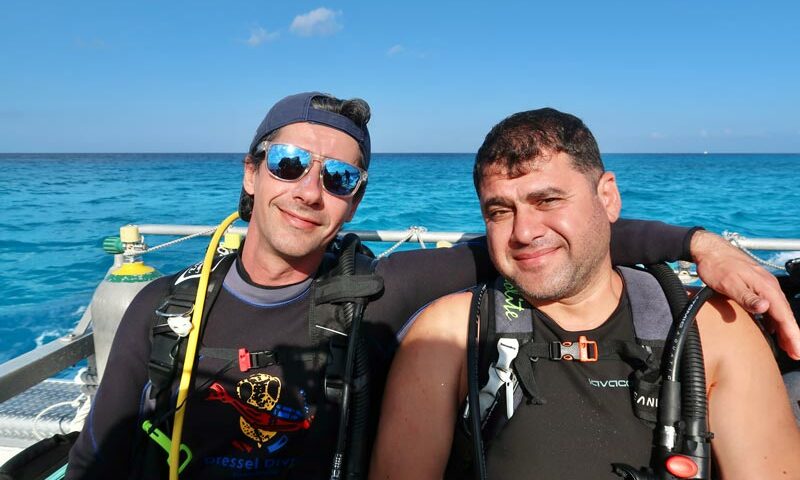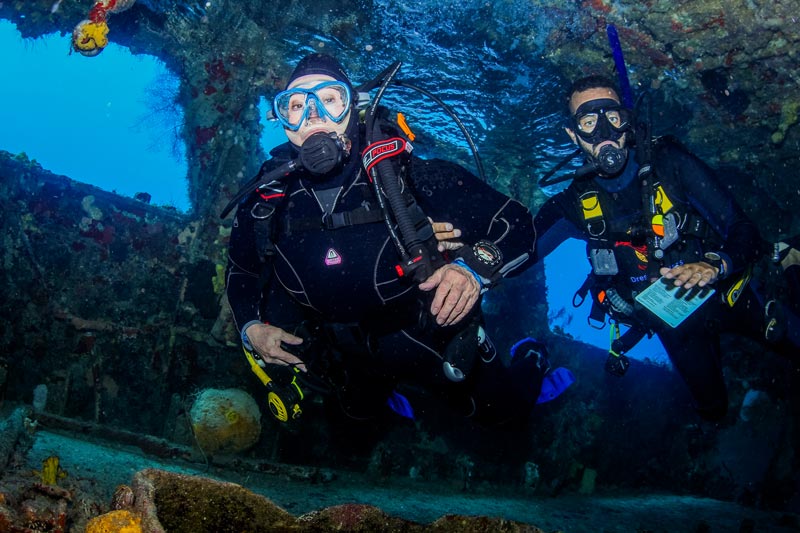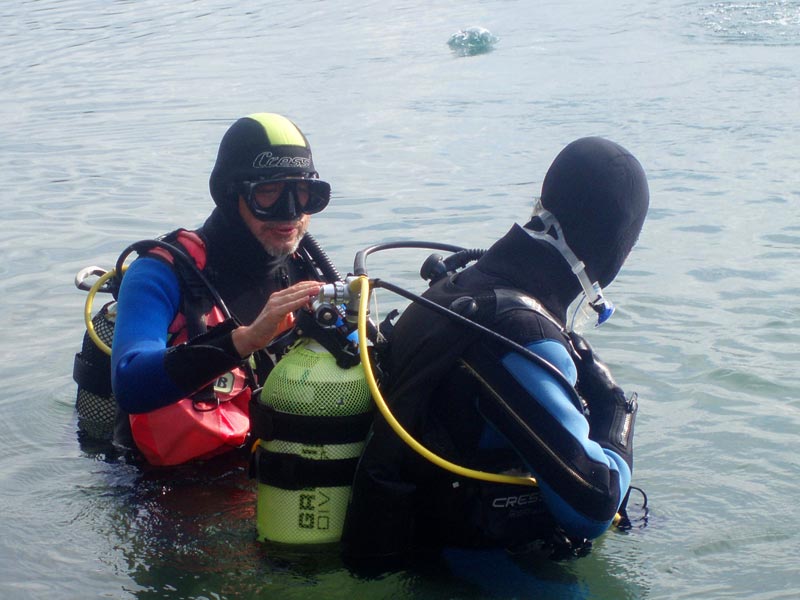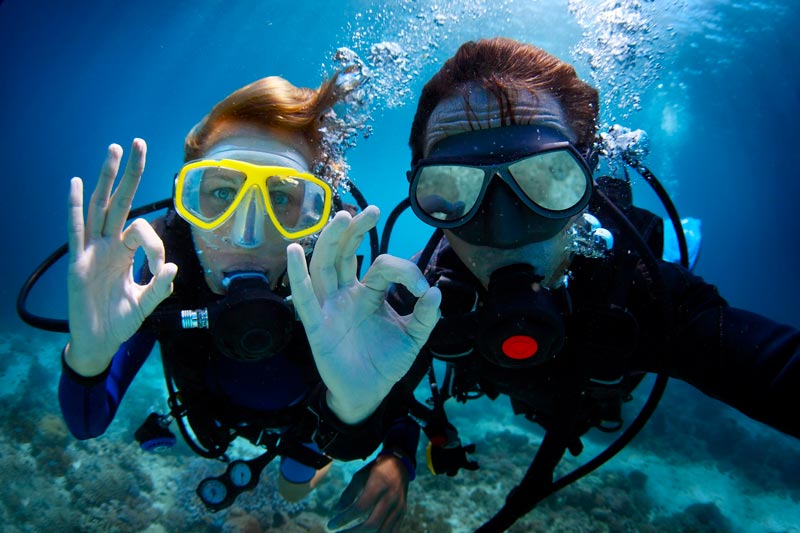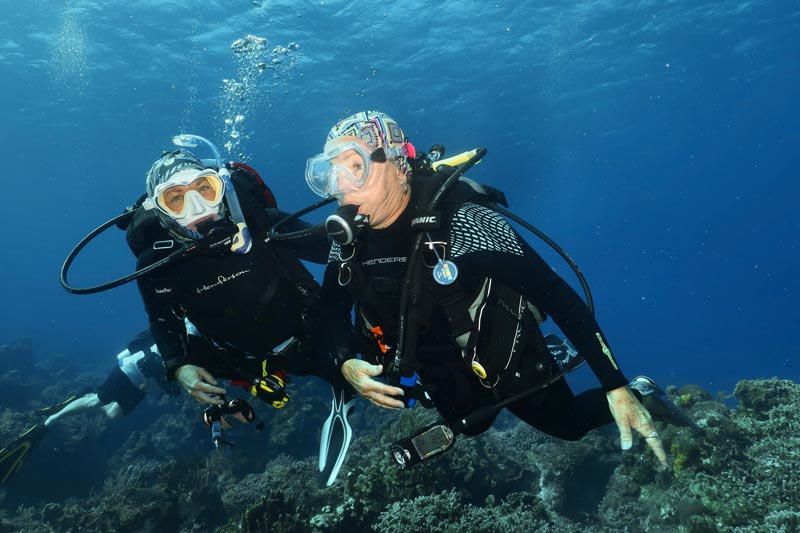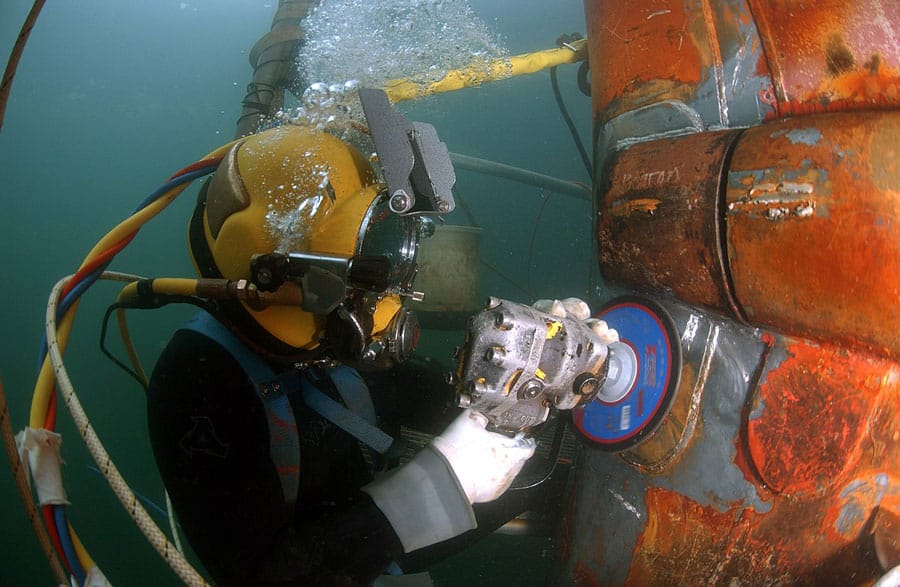5. How to Nail Your Dive Buddy Checks: Scuba BWRAF
Well, before you take the plunge, it’s essential to perform the famous BWRAF buddy check. But hey, let’s make it more memorable by transforming it into “Breathing Water Really Ain’t Fun!” Trust me, this catchy phrase will stick in your mind like an underwater creature to a coral reef.
Now, let’s break down the BWRAF rule, which covers all the vital equipment your dive buddy should inspect. Don’t worry; it’s easier than it sounds!
B – BCD/Buoyancy:
The BCD check involves checking that it inflates and deflates optimally. Verify the integrity and functionality of all connections. Test the inflator button and deflate valves to ensure they are operational. In addition, your buddy checks there are no leaks in the BCD, the oral inflation hose, or the one connected to the cylinder.
Dry suit divers must confirm the functionality of their inflator valve and deflator valves.
It is vital to acquaint yourself with your buddy’s gear. If you are unfamiliar with their equipment, don’t hesitate to ask questions. In case of an emergency, your preparedness will be greatly appreciated.
W – Weight:
It’s time to check your weight belts or weight pockets, and that all weights are secure. Your buddy checker will verify that they are in place and are sufficient to counteract the positive buoyancy of the wetsuit and other equipment. In your diving check give a gentle tug on BCD weight pouches to confirm they’re locked in and won’t fall out during entry.
R – Releases:
This point checks that all dive gear parts are correctly connected, secured, accessible, and can be removed if necessary: from the weight belt to the air tank including the BCD shoulder and chest straps and belly straps.
Your buddy’s check will also verify that no crushed or loose hose cannot perform its function or damage the environment during the dive. This diving check should verify there is nothing positioned in a way that might prevent a diver from getting out of their equipment in an emergency.
A – Air:
Among other things, your partner will check if your cylinder has air and then if you can breathe. Taking a quick breath or two off the regulator isn’t enough. A proper air buddy check means verifying the cylinder valve is completely open. Your buddy will check the cylinder pressure controls are working and are accessible while you take many breaths. So, you will know the air is available for the dive, your monitoring gauge is working, and the air tastes okay.
Your dive buddy will also check that the emergency regulator is secured and you know where is it located in an emergency.
F – Final Check:
Zips closed, sleeve and neck seal fastened, mask, snorkel, fins, dive light, camera, audible and visual signaling device, and of course, the dive computer verifications. Your buddy checker should verify that the dive computer is turned on and working in dive mode. Lastly, Do a head-to-toe diving check to ensure both buddies are ready to go.
BWRAF buddy check
The steps described above are a generic, quick review for divers using an open circuit system. If you’re diving technical or rebreather, you should conduct safety checks appropriate to the diving procedure.




